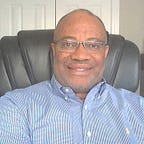Separate and Unequal — Elementary and High School Days
This article is the first in a series chronicling my educational experiences as a black student during the 1950s, 60s, and 70s.
My early childhood education started at Fair Oaks Elementary School, a segregated Henrico County, Virginia school. At that time (1958), separate but equal laws (Jim Crow) prevented black kids (we were Negroes then) from attending schools with white kids.
Most of elementary school is a blur; however, several things stand out. First, discipline problems were not an issue as they are today. Teachers were known for striking kids, and no policies were against it. Moreover, kids behaved because they feared the punishment their parents would inflict if they were informed of the misbehavior at school.
One teacher was known for throwing stuff and cracking kids across the knuckles with a ruler. My brother recalls being struck across the knuckles because he could not remember an assignment.
Morning prayers (we were a homogeneous group, mostly Baptist) were the norm, as was the pledge of allegiance to the flag.
“I pledge allegiance to the Flag of the United States of America, and to the Republic for which it stands, one Nation under God, indivisible, with liberty and justice for all,”
Despite living in a segregated society where injustice and unfairness prevailed, we were unwittingly conditioned to be patriots from an early age.
My fourth-grade teacher, who taught U.S. history, became very angry when classmates purchased Confederate memorabilia while visiting Colonial Jamestown, Virginia.
We did not know better. Perhaps it was a teaching moment for the teacher, and she better prepared her future students.
I also recall the disbelief I felt when a white superintendent spoke to my seventh-grade class and said we had one of the best facilities in the county. My seventh-grade mind wondered how we could have one of the best facilities when we had only one basketball hoop as opposed to full basketball courts at nearby white schools.
While most of my elementary school remembrances were traumatic, I recall the teachers’ passion, compassion, pride, and dedication. Mrs. Zenobia (Rev Z.) Scott (seventh grade) and Mrs. Cosby (fifth grade) stand out. They were role models, and we aspired to be like them.
They told us if we could dream it, we could achieve it.
Virginia’s schools were still segregated when it came time for me to attend high school. Despite the U.S. Supreme Court’s call to end segregation in its 1954 Brown vs. Board of Education decision, Virginia’s lawmakers, led by Senator Harry Byrd Sr. (a Democrat), passed Massive Resistance laws to defy Brown vs. Board of Education and delay desegregation.
Ironically, I recall my parents telling me that Democrats were the good guys, passing laws to benefit black people.
Perhaps that was after the Byrd era.
When the Massive Resistance laws were ruled unconstitutional in 1959 by federal and state courts, Virginia implemented a Pupil Placement Board. This passive resistance plan assigned select black students to white schools — I do not recall anything about that program. I remember the following form of passive resistance: Freedom of Choice, which gave families the right to choose between white and black schools.
Freedom of Choice plans remained in place until the late 1960s when the U.S. Supreme Court ruled that the plans were insufficient to achieve integration.
Because of overt racism and known indignities experienced by black students I knew who attended white schools, there was no compelling reason for me to choose to attend or for my family to send me to a white school.
At this point in my life, the nurturing provided by black teachers and administrators and the esprit de corps garnered in an environment of familiarity outweighed the benefits of sitting beside white students in a hostile environment.
As such, I attended Virginia Randolph High School in Glen Allen, Virginia, the only high school black students residing in Henrico County could attend before school integration.
I traveled 22 miles one way by bus to get to school, bypassing traditionally white high schools: Highland Springs, Hermitage, and Henrico.
I excelled academically at Virginia Randolph, particularly in mathematics.
I fell under the tutelage of the renowned and dedicated math teacher and coach, Mr. Ernest Parker, who was known for nurturing his students and willing them to success.
Mr. Parker’s favorite saying was: “Drill, drill, drill for skill.” And drill we did.
After school, several other students and I (Parker’s kids), strong in math, would spend hours fine-tuning our math skills and taking tests. Mr. Parker would then, at his expense, take us home to various locations throughout the county — that was dedication.
The extra work paid off. Virginia Randolph students typically took top prizes at state-wide math and science conferences.
During my sophomore year, a classmate placed first, and I placed second in the state-wide Algebra I test.
The following year, I placed first in Algebra II.
During my 10th grade year (1968), based on standardized test scores and Mr. Parker’s urging, I was awarded a full academic scholarship to attend Culver Military Academy (Culver Academies) in Culver, Indiana.
My parents were not particularly thrilled about me going away to a private school; however, Mr. Parker pushed, extolling the value of the opportunity, and my parents relented, allowing me to go.
The scholarship, valued at about $52 thousand per year in 2019 dollars, was part of a social experiment known as the A Better Chance Program (ABC Program). The ABC Program awarded full scholarships to academically gifted students of color to attend private college preparatory (prep) schools.
This was a defining moment in my life, something I had dreamed about. It affirmed the value added from those additional hours spent during the evenings. It would also lay the foundation for my acceptance into elite colleges and a successful career.
